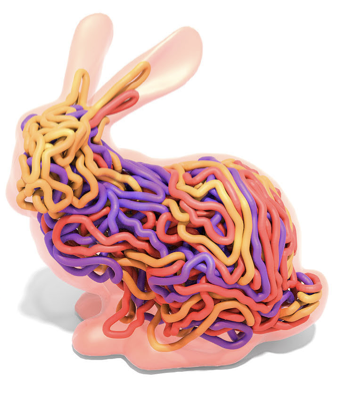A paper and a poem on repulsion
Keenan Crane, a computer science professor at CMU, recently published with his students two delightful SIGGRAPH papers related to repulsion: “Repulsive Curves” and “Repulsive Surfaces.” The papers define an energy function on curves and surfaces; this energy function lets you use gradient descent to optimize geometric objects to fill space and avoid self-intersection.

When I first came across these papers, I was reminded of a poem by Kay Ryan called “Repulsive Theory.” It begins,
Little has been made
of the soft, skirting action
of magnets reversed,
while much has been made of attraction.
Go on, read the rest! I love this poem because of how unexpectedly it creates beauty from mathematical and scientific language. There is hidden delight saved just for the technical reader: knowledge of the mysterious expansion of our cosmos, or the computational nature of “convolutions,” only heightens the poem’s message, widens the reader’s grin. And even putting aside meaning, on a purely aural level, phrases like “pillowy principle” and “incurved beaches” and “pearly convolutions” and “pooling space” are a joy to read: they scoop up these tricky technical terms and melt them into smooth, soft song…
…err, almost too smooth, almost too soft, don’t you think? On a second or third reading, there is something just a little slimy about the poem: the “doily edges” are dangerously close to “oily” edges, and the wires do touch soon enough when we get to the “oiled motions of avoidance” and the “whole swirl.” Ryan’s intellectual theory of avoidance is, at a subconscious or “gut” level greasy, gross, yucky, unsettling — ah, now we get it: repulsive. I think back to the SIGGRAPH papers and laugh: after showing all of their beautiful figures and examples, the authors really do find themselves calling their results “repulsive.”